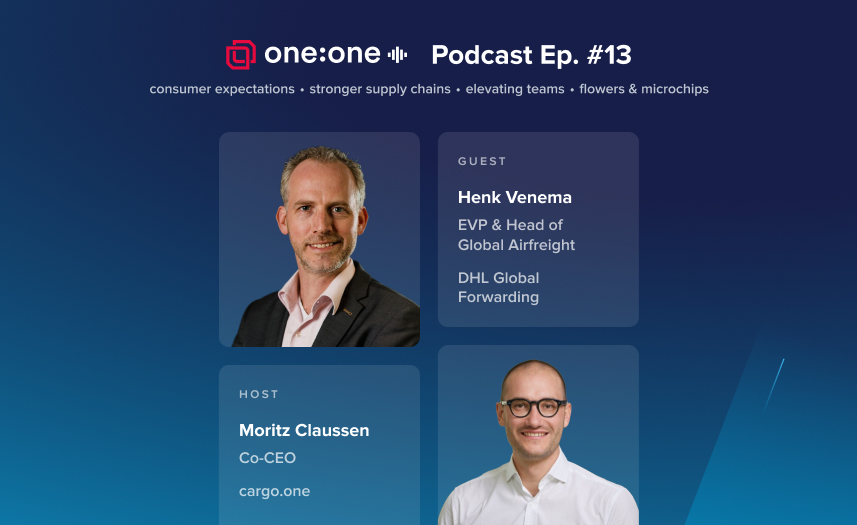Recently, I have been having more and more conversations with some of the largest forwarders globally, centering around a common narrative: “We have invested substantial time, effort, and money into building our own carrier integrations, but we don’t see meaningful uptake internally.”
It is no secret that many forwarders have opted to build direct integrations, and that carriers have invested into making their supply available through application programming interfaces (APIs). This appears logical at first sight: as a large forwarder, I need to connect to my preferred carriers to search for air cargo offers, and book and manage my air cargo shipments – directly from my TMS.
And at face value, this strategy makes sense. So why is the uptake within their various teams so poor, then?
Unmasking the challenge
When starting to dig deeper, one quickly recognizes the intricacies and realities that can stand in the way of strong digital uptake.
Most importantly, many of these projects are driven by the desire to quickly progress to a certain desired outcome: “All my internal users should be booking air freight in my TMS, therefore, I will connect to a few airlines and make them available for booking.” Of course, what this approach lacks is sufficient consideration of the user’s sense of product experience and value.
What does it take to convince all of your users to book your air cargo within your TMS? In simple terms, it requires the ability to connect to an airline and make it available for booking. But in reality, it encompasses so much more than that.
The critical importance of offer quality and ease of use
Put simply, offer quality and ease of use combine to comprise the overall product experience and value that is critical to the user.
Offer quality on a freight booking platform is made up of breadth, depth and accuracy. How many carriers are there for me to book (offer breadth), what can I book with them (offer depth), and can I get my choice confirmed instantly (offer accuracy)?
- Offer breadth: As a user, I am happiest when I can find what I am looking for – as an airfreight booking agent, this means many if not all the carriers that I would expect to serve a capacity search.
- Offer depth: As a user, I am happiest if I find what I am looking for, including road feeder services, products and services that I can rely upon in the offline world.
- Offer accuracy: As a user, I am happiest when my selected offer is accurate to a degree that I can book it and immediately get confirmation about all the parameters selected, including the price, routing and times.
Just think of your own user experience as a hotel guest. Imagine a tool where you could see only half of the hotels in a city, access only a subset of the rooms, and upon booking, you would receive a message that your selection could not be confirmed at this time – wouldn’t that be maddening?
The user’s experience when interacting with any platform is key. How easy is it to find and book air freight on the platform? As a user, you want to click as few buttons and enter as little information as possible to get to the desired outcome. Back to our hotel example: you don’t need to set an exact search radius, or compare hotel offers based on different currencies, having to do manual currency conversions yourself. Platforms need to be smart and intuitive, from start to finish – otherwise they won’t be used.
User Experience is vital
But in speaking with many enterprise forwarders, such conditions are exactly what they ask of their teams. Raw carrier cargo rate APIs, which are often unstable, can return cryptic error codes, invalid offers, outdated prices and more, and are commonly implemented without proper curation into a TMS front-end. Additionally, only the few carriers with ready-to-implement APIs are being integrated directly, and at a painfully slow pace.
As a result, when users perform a search, they see only a fraction of the options they would expect, and the quality of the offers is sub-par, with many not bookable or displaying inaccurate information. Furthermore, there is no product logic implemented to elevate the user experience.
A better digital way
With amazing external air freight platform alternatives such as cargo.one being available for free to such users, the low uptake of internal platforms is no surprise. At cargo.one, we see proof of this every day, from the many daily active users within the same enterprise forwarders that have set a clear strategy for prioritizing their internal platform. Frankly, the best digital method will always prevail.
Poor uptake of forwarders’ own internal platforms is nearly always because the product experience and value that the in-house platform creates or adds for users is subpar. If there is little real and immediate value to be enjoyed by the user, they will simply choose a better alternative.
At cargo.one, our teams engineer enterprise-ready solutions that guarantee keen adoption through combining the most substantial and strongest offer content in the market with joyful user experiences within any endpoint needed. However large or complex the forwarding organization, user value and user experience remain our north-star. Time and time again, the air cargo statistics of our enterprise users reveal that cargo.one rapidly becomes their most trusted and favored rate management tool and air cargo booking platform. To discuss your digital air freight success, reach out to our enterprise team today.
Stay tuned! In his next installment, Moritz deep dives into the engineering of value creation and quick routes to accelerate your digital booking success.














.png)





